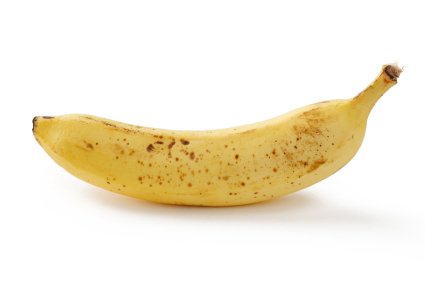Update: Bananas re-tested!

Shirley Webber and Lyndal McNamara - Research Dietitians, 16 May 2017
From time-to-time, we re-test a food tested in the past, to
ensure that the information we provide to app users is up-to-date. This is important as changes in agricultural and environmental factors can influence FODMAP levels in food. Our scientific testing methods have also become more advanced over time, allowing us to detect FODMAPs with even greater sensitivity and accuracy.
Our most recently re-tested food was banana. We chose banana
in part, because many people had reported discomfort after eating ripe bananas.
Our app has since been updated with these new data.
New FODMAP ratings of common ripe bananas versus firm bananas:
Ripe banana = High
(Oligo-fructans)
Firm banana = Low (Oligo-fructans)
Why has the FODMAP rating of bananas changed so significantly?
We know that agricultural and environmental factors
influence FODMAP levels in food and believe that the changes in our FODMAP
results may reflect this.
From published research we know that plants naturally tend to accumulate fructans in response to environmental stressors such as cold temperatures and drought.(1) Fructans provide plant cells with greater structural integrity, making them more hardy and resistant to damage from environmental changes and disease.(1)
Studies investigating bananas specifically have found that their fructan content increases when they are stored and ripened in cold storage, which is now relatively common practice by supermarket chains to prevent spoilage and guarantee even ripening.(2, 3) Farmers may also be selectively breeding varieties of crops with a higher fructan content, as they tend to be more resilient to pests and diseases.(1)
As our findings have confirmed, simple changes in how we grow or even store food over time can have a significant effect on their FODMAP content by the time they reach consumers. This emphasises just how important it is to test and retest foods to ensure that the FODMAP
composition data provided in our app is consistent with the foods currently in
the food supply.
To reflect these new findings, we have updated the banana listings
in the app and revised the banana recipes. Remember to check the app for this updated
information, including serving size information. When you look at the serving
size information, you will see that you can still have a small serve of ripe banana (1/3 banana).
It is important to remember that if you currently tolerate ripe bananas well, then there is no need to remove them from your diet. Remember, your diet only needs to be as strict as your symptoms require!
References:
- Valluru R, Van den Ende W. Plant fructans in stress environments: emerging concepts and future prospects.J Exp Bot2008; 59 (11): 2905-2916. Shalini R, Antony U.
- Agopian R G D, Purgatto E, Cordenunsi B R, Lajolo F M, Paulo U D S.Synthesis of fructooligosaccharides in banana `prata` and its relation to invertase activity and sucrose accumulation. Amer Chemical Soc. 2009.
- Fructan distribution in banana cultivars and effect of ripening and processing onNendranbanana.Journal of Food Science and Technology. 2015;52(12):8244-8251.
